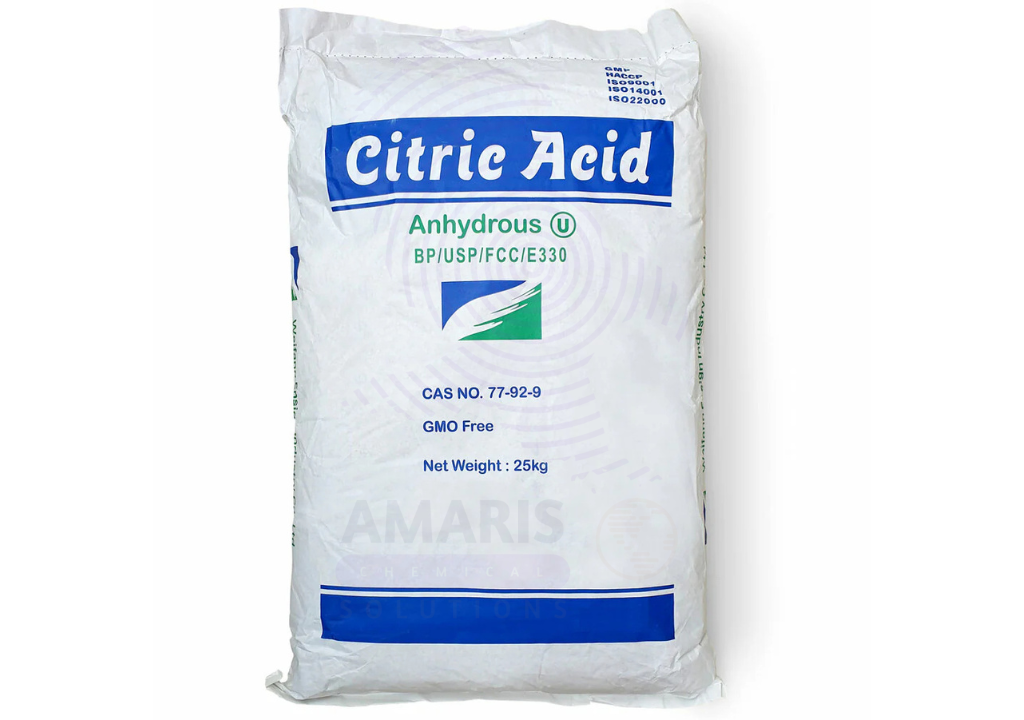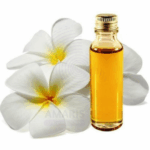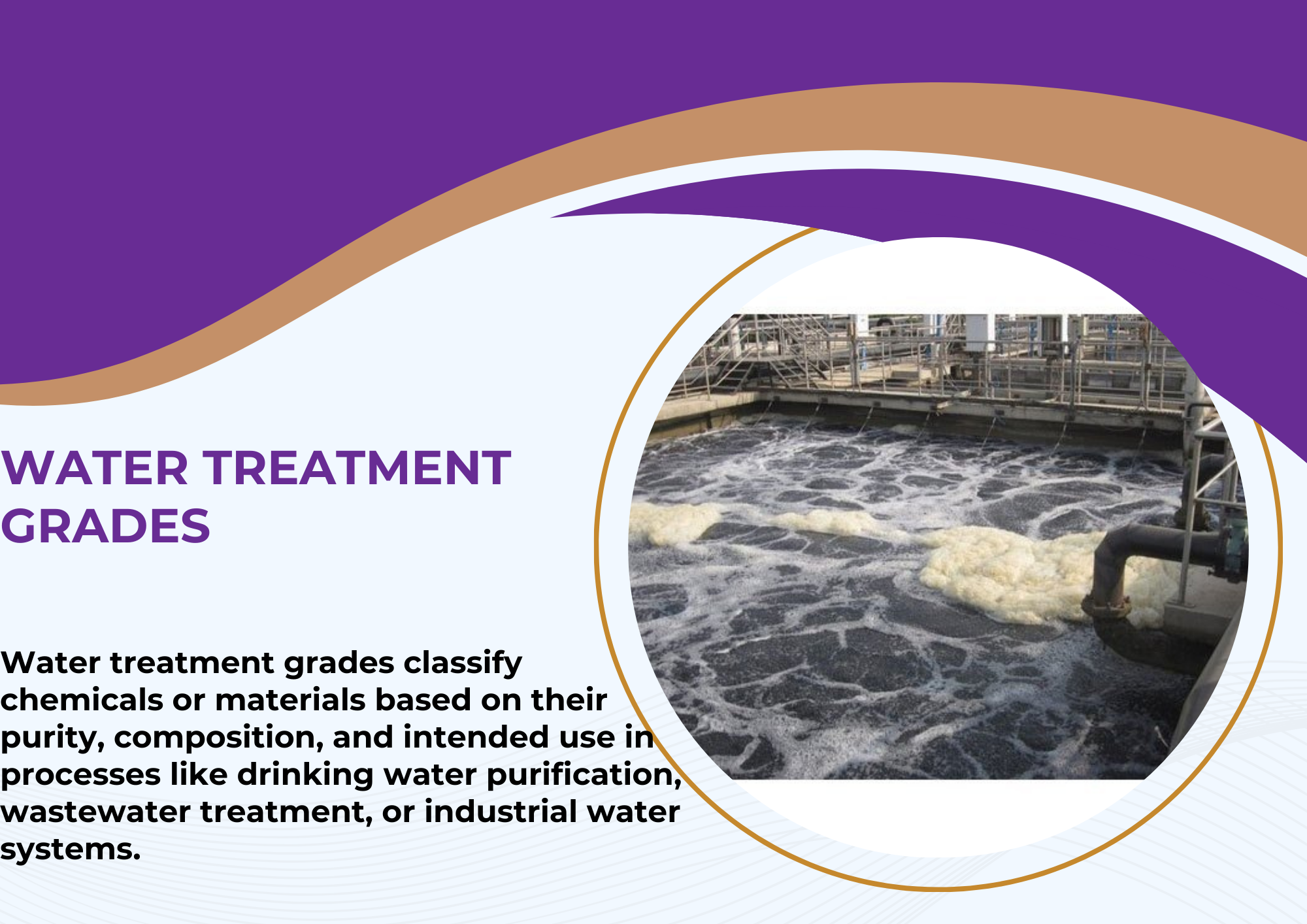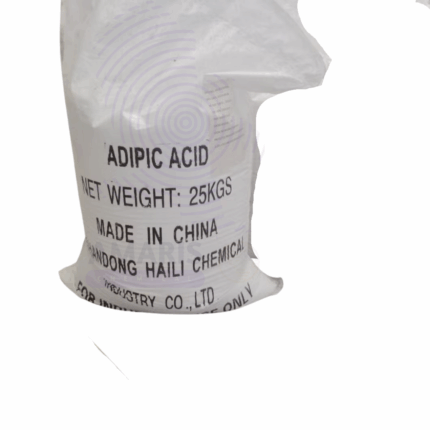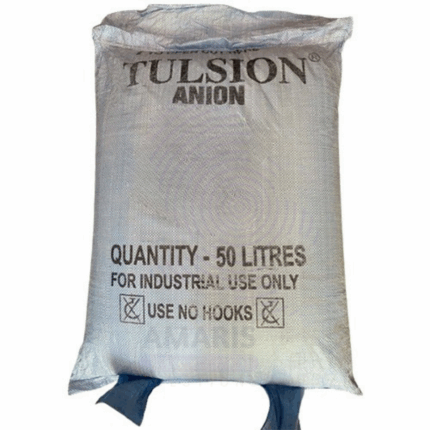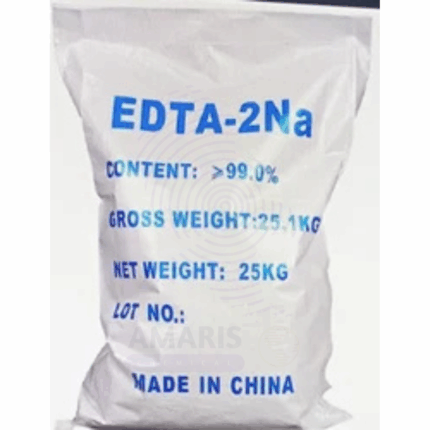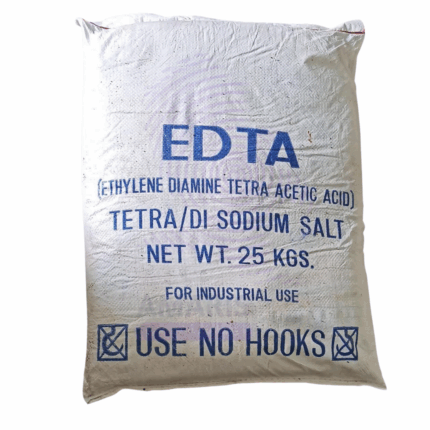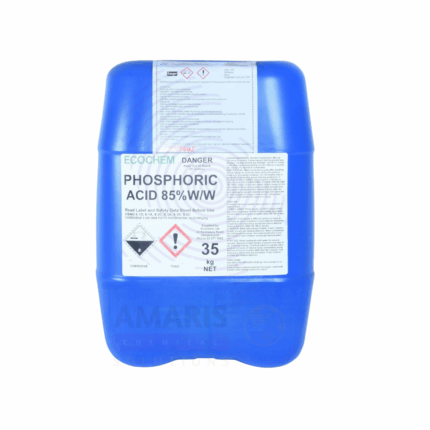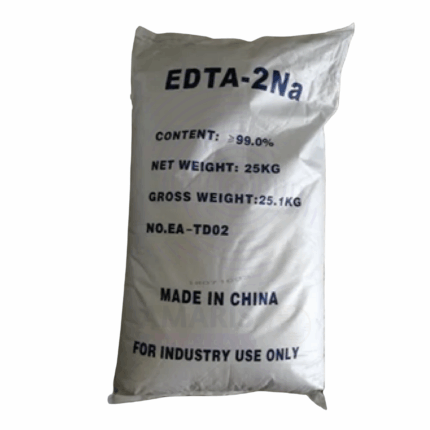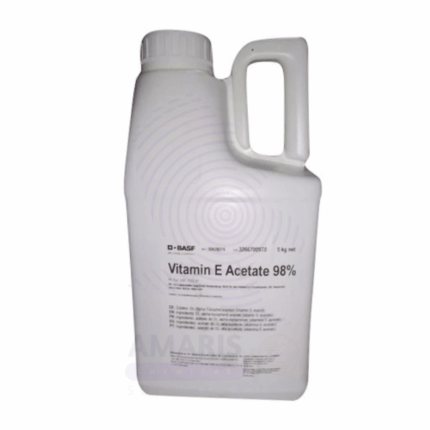Citric Acid Anhydrous
$ 2.25 Original price was: $ 2.25.$ 2.14Current price is: $ 2.14.
Whatsapp Order
Citric Acid Anhydrous is a white, crystalline organic acid widely used across food, pharmaceutical, cosmetic, and industrial sectors. It is the anhydrous form of citric acid, meaning it contains no water molecules in its crystal lattice, resulting in higher purity and more concentrated acidic properties compared to its monohydrate form. Derived from natural sources like citrus fruits or produced via microbial fermentation, citric acid anhydrous is valued for its sour taste, excellent chelating ability, and buffering capacity. It serves as a natural preservative, pH adjuster, antioxidant synergist, and cleaning agent, making it a versatile ingredient in many formulations.
Description
Table of Contents
Toggle
Citric Acid Anhydrous
Primary Uses
- Food & Beverage Industry
- Used as an acidulant to provide tartness and enhance flavor in beverages, candies, jams, and dairy products.
- Acts as a preservative by chelating metal ions that catalyze oxidative spoilage, extending shelf life.
- Employed as a pH regulator to maintain product stability and consistency.
- Used in effervescent powders and tablets combined with bicarbonates for controlled fizzing.
- Pharmaceuticals & Nutraceuticals
- Serves as a pH adjuster in oral syrups, tablets, and effervescent formulations.
- Used to stabilize active ingredients sensitive to alkaline conditions.
- Acts as a chelating agent enhancing bioavailability of minerals and vitamins in supplements.
- Cosmetics & Personal Care
- Used to adjust pH in creams, lotions, shampoos, and bath products.
- Functions as an antioxidant synergist by chelating metal ions that degrade product quality.
- Incorporated in exfoliating formulations due to its mild acidity and natural origin.
- Industrial & Cleaning Applications
- Used as a biodegradable chelating agent in detergents and cleaners to remove scale and metal deposits.
- Employed in metal surface treatment and descaling processes.
- Acts as a buffering agent in chemical manufacturing and laboratory reagents.
Secondary Uses
- Agriculture
- Used in foliar sprays and fertilizers to chelate micronutrients, improving plant nutrient uptake.
- Water Treatment
- Serves as a sequestering agent to control hardness and prevent scale buildup in boilers and cooling systems.
- Textile Industry
- Applied in dyeing processes to adjust pH and improve color fastness and brightness.
- Food Packaging
- Incorporated in active packaging materials as an antimicrobial and antioxidant component.
Additional information
| PACK SIZE |
25kg |
|---|
KEY PRODUCT FEATURES
1. Basic Identification Attributes
- Chemical Name (IUPAC): 2-hydroxypropane-1,2,3-tricarboxylic acid (Anhydrous)
- Common/Trade Name: Citric Acid Anhydrous
- CAS Number: 77-92-9
- HS Code: 2918.14.00
- Molecular Formula: C₆H₈O₇
- Synonyms: Citric Acid, Anhydrous; 2-hydroxy-1,2,3-propane-tricarboxylic acid
2. Physical & Chemical Properties
- Physical State: White crystalline powder or granules
- Color & Odor: White; odorless or faintly acidic odor
- Melting Point: 153°C (decomposes)
- Solubility: Highly soluble in water (~59 g/100 mL at 20°C); insoluble in alcohol and ether
- pH (1% solution): ~1.7 (acidic)
- Stability: Stable under normal conditions; hygroscopic (absorbs moisture)
3. Safety & Hazard Attributes
- Hazard Class (GHS): Generally considered safe; irritant in concentrated form
- NFPA Ratings: Health 2, Flammability 0, Reactivity 0
- Exposure Limits: No established OSHA PEL; avoid inhalation of dust
- Toxicity: Low toxicity; generally recognized as safe (GRAS) in food
- Reactivity: Stable; reacts with strong bases and oxidizers
4. Storage & Handling Attributes
- Storage Conditions: Store in a cool, dry, well-ventilated area away from moisture and incompatible substances
- Container Type: Sealed polyethylene or fiber drums, or food-grade bags
- Shelf Life: Typically 3-5 years if stored properly
- Special Handling: Avoid dust formation; use appropriate PPE like masks and gloves when handling powders
5. Regulatory & Compliance Attributes
- FDA Status: GRAS for food use (21 CFR §184.1033)
- Food Additive Code (EU): E330
- REACH Status: Registered
- Transportation: Not classified as hazardous
- Waste Disposal: Dispose in accordance with local regulations; biodegradable
6. Environmental & Health Impact
- Ecotoxicity: Low environmental impact; biodegradable and non-toxic to aquatic life at typical use concentrations
- Persistence: Readily biodegradable
- Bioaccumulation: Not expected to bioaccumulate
- Carcinogenicity/Mutagenicity: Not classified as carcinogenic or mutagenic
- Biodegradability: Rapidly biodegradable
SAFETY HANDLING PRECAUTIONS
Safety Handling Precautions
- PPE: Dust mask, gloves, goggles when handling powders
- Handling: Avoid inhalation and prolonged skin contact; minimize dust generation
- Storage: Keep containers tightly closed and dry
- Hygiene: Wash hands after use; no eating or drinking in handling areas
First Aid Measures
- Inhalation: Move to fresh air; seek medical attention if irritation or breathing difficulty occurs
- Skin Contact: Wash with soap and water; seek medical care if irritation develops
- Eye Contact: Rinse eyes with plenty of water for at least 15 minutes; seek medical advice if irritation persists
- Ingestion: Generally safe in small amounts; rinse mouth and drink water; seek medical advice if large quantities ingested
Firefighting Measures
- Fire Hazards: Non-flammable; may decompose to emit carbon oxides under intense heat
- Extinguishing Media: Use water spray, foam, dry chemical, or CO₂ extinguishers
- Special Precautions: Firefighters should wear protective gear and self-contained breathing apparatus if large fire
- Decomposition Products: Carbon dioxide, carbon monoxide
Related products
Adipic Acid
$ 3.20
Anion
Anions are negatively charged ions formed when an atom or molecule gains one or more electrons. They play vital roles in chemistry, biology, and industrial processes. Anions are key participants in ionic bonding, acid-base chemistry, and electrochemical reactions. Common anions include chloride (Cl⁻), sulfate (SO₄²⁻), nitrate (NO₃⁻), and phosphate (PO₄³⁻). Their behavior and interaction affect processes ranging from water treatment and agriculture to physiological functions and battery technology.
Disodium Salt (EDTA)
Disodium Salt (EDTA), (Ethylenediaminetetraacetic acid disodium salt) is a widely used chelating agent that binds metal ions to form stable complexes. It effectively sequesters divalent and trivalent metal ions such as calcium, magnesium, iron, and heavy metals, preventing their participation in unwanted chemical reactions. This property makes it essential in a wide range of industrial, pharmaceutical, cosmetic, agricultural, and water treatment applications. The disodium salt form offers excellent water solubility and is often used in neutral to slightly alkaline systems.
Phosphoric Acid Food Grade
Phosphoric Acid Food Grade is a highly concentrated, colorless, odorless liquid acid used extensively in the food and beverage industry. It acts as an acidulant, flavoring agent, and preservative, approved for direct use in food processing. This grade meets strict purity standards suitable for consumption and is widely employed to control pH, add tanginess, and extend shelf life. It is also used in other industries requiring high-purity phosphoric acid.
Sodium Sulphite (Blue)
Sodium Sulphite Blue is a white to bluish-white crystalline powder with the chemical formula Na₂SO₃. The “Blue” grade indicates a specific industrial quality often containing minor additives or impurities, used primarily in water treatment and chemical industries. It acts as an effective oxygen scavenger, reducing agent, and preservative. This 25kg packaged product is highly soluble in water, forming alkaline solutions, and is widely used in pulp and paper, water treatment, textile, and photographic industries.
Trilium (EDTA)
Trilium EDTA is a high-purity, versatile chelating agent known chemically as ethylenediaminetetraacetic acid (EDTA) or its trisodium salt form. It is widely used across industries to bind and sequester metal ions, improving product stability and performance. Trilium EDTA effectively prevents metal ion contamination, controls hardness in water, enhances cleaning efficiency, and stabilizes formulations in pharmaceuticals, cosmetics, agriculture, and industrial applications. Its strong chelating properties make it an essential ingredient for complexation and metal ion control.
Vitamin E Acetate Oily
Vitamin E Acetate Oily, also known as DL-Alpha-Tocopheryl Acetate, is a synthetic, oil-soluble form of Vitamin E with high purity and exceptional oxidative stability. This viscous liquid is ideal for applications requiring direct incorporation into oil-based systems such as soft gel capsules, cosmetic formulations, and fortified edible oils. Its stability under processing and storage conditions makes it a preferred form of Vitamin E for nutritional, pharmaceutical, cosmetic, and food-grade applications.
Vitamin E Acetate Powder
Vitamin E Acetate Powder, also known as DL-Alpha-Tocopheryl Acetate Powder, is a dry, free-flowing, encapsulated form of Vitamin E, standardized to contain 50% of active DL-Alpha-Tocopheryl Acetate. It is designed for easy handling and uniform mixing in dry formulations and is ideal for use in nutritional supplements, fortified foods, and animal feed. The microencapsulation enhances stability against oxidation, heat, and light, ensuring long shelf life.


 Preservatives(food)
Preservatives(food) Flavor Enhancers
Flavor Enhancers Acidulants
Acidulants Sweeteners
Sweeteners Antioxidants
Antioxidants Colorants(food)
Colorants(food) Nutraceutical Ingredients (food)
Nutraceutical Ingredients (food) Nutrient Supplements
Nutrient Supplements Emulsifiers
Emulsifiers
 Collectors
Collectors Dust Suppressants
Dust Suppressants Explosives and Blasting Agents
Explosives and Blasting Agents Flocculants and Coagulants
Flocculants and Coagulants Frothers
Frothers Leaching Agents
Leaching Agents pH Modifiers
pH Modifiers Precious Metal Extraction Agents
Precious Metal Extraction Agents
 Antioxidants(plastic)
Antioxidants(plastic) Colorants (Pigments, Dyes)
Colorants (Pigments, Dyes) Fillers and Reinforcements
Fillers and Reinforcements Flame Retardants
Flame Retardants Monomers
Monomers Plasticizers
Plasticizers Polymerization Initiators
Polymerization Initiators Stabilizers (UV, Heat)
Stabilizers (UV, Heat)
 Antifoaming Agents
Antifoaming Agents Chelating Agents
Chelating Agents Coagulants and Flocculants
Coagulants and Flocculants Corrosion Inhibitors
Corrosion Inhibitors Disinfectants and Biocides
Disinfectants and Biocides Oxidizing Agents
Oxidizing Agents pH Adjusters
pH Adjusters Scale Inhibitors( water)
Scale Inhibitors( water)
 Antioxidants(cosmetic)
Antioxidants(cosmetic) Emollients
Emollients Fragrances and Essential Oils
Fragrances and Essential Oils Humectants
Humectants Preservatives
Preservatives Surfactants(cosmetic)
Surfactants(cosmetic) Thickeners
Thickeners UV Filters
UV Filters
 Fertilizers
Fertilizers Soil Conditioners
Soil Conditioners Plant Growth Regulators
Plant Growth Regulators Animal Feed Additives
Animal Feed Additives Biostimulants
Biostimulants Pesticides (Herbicides, Insecticides, Fungicides)
Pesticides (Herbicides, Insecticides, Fungicides)
 Active Pharmaceutical Ingredients (APIs)
Active Pharmaceutical Ingredients (APIs) Excipients
Excipients Solvents(pharmaceutical)
Solvents(pharmaceutical) Antibiotics
Antibiotics Antiseptics and Disinfectants
Antiseptics and Disinfectants Vaccine Adjuvants
Vaccine Adjuvants Nutraceutical Ingredients (pharmaceutical)
Nutraceutical Ingredients (pharmaceutical) Analgesics & Antipyretics
Analgesics & Antipyretics
 Analytical Reagents
Analytical Reagents Solvents(lab)
Solvents(lab) Chromatography Chemicals
Chromatography Chemicals Spectroscopy Reagents
Spectroscopy Reagents microbiology-and-cell-culture-reagents
microbiology-and-cell-culture-reagents Molecular Biology Reagents
Molecular Biology Reagents Biochemical Reagents
Biochemical Reagents Inorganic and Organic Standards
Inorganic and Organic Standards Laboratory Safety Chemicals
Laboratory Safety Chemicals Specialty Laboratory Chemicals(Special Laboratory Equipment)
Specialty Laboratory Chemicals(Special Laboratory Equipment)
 Demulsifiers
Demulsifiers Hydraulic Fracturing Fluids
Hydraulic Fracturing Fluids Scale Inhibitors(oil)
Scale Inhibitors(oil) Surfactants(oil)
Surfactants(oil) Drilling Fluids
Drilling Fluids
 Dyes and Pigments
Dyes and Pigments Bleaching Agents
Bleaching Agents Softening Agents
Softening Agents Finishing Agents
Finishing Agents Antistatic Agents
Antistatic Agents
 Admixtures
Admixtures Waterproofing Agents
Waterproofing Agents Sealants and Adhesives
Sealants and Adhesives Curing Compounds
Curing Compounds Concrete Repair Chemicals
Concrete Repair Chemicals Anti-Corrosion Coatings
Anti-Corrosion Coatings
 Surfactants(cleaning)
Surfactants(cleaning) Builders
Builders Enzymes
Enzymes Solvents (Cleaning)
Solvents (Cleaning) Fragrances
Fragrances
 Electronic Chemicals
Electronic Chemicals Catalysts
Catalysts Lubricants
Lubricants Photographic Chemicals
Photographic Chemicals Refrigerants
Refrigerants Automotive chemicals
Automotive chemicals Pyrotechnic Chemicals
Pyrotechnic Chemicals
 Biodegradable Surfactants
Biodegradable Surfactants Bio-based Solvents
Bio-based Solvents Renewable Polymers
Renewable Polymers Carbon Capture Chemicals
Carbon Capture Chemicals Wastewater Treatment Chemicals
Wastewater Treatment Chemicals
 Pigments
Pigments Solvents(paint)
Solvents(paint) Specialty Coatings
Specialty Coatings Binders/Resins
Binders/Resins Additives
Additives Driers
Driers Anti-Corrosion Agents
Anti-Corrosion Agents Functional Coatings
Functional Coatings Application-Specific Coatings
Application-Specific Coatings
 Fresh Herbs
Fresh Herbs Ground Spices
Ground Spices Whole Spices
Whole Spices Spice Blends
Spice Blends Dried Herbs
Dried Herbs
 Leavening Agents
Leavening Agents Dough Conditioners
Dough Conditioners Flour Treatments
Flour Treatments Fat Replacers
Fat Replacers Decoratives
Decoratives Preservatives(baking)
Preservatives(baking)
 Plasticizers & Softeners
Plasticizers & Softeners Reinforcing Agents
Reinforcing Agents Adhesion Promoters
Adhesion Promoters Vulcanizing Agents
Vulcanizing Agents Antidegradants
Antidegradants Blowing Agents
Blowing Agents Fillers & Extenders
Fillers & Extenders Accelerators & Retarders
Accelerators & Retarders